Cloud Computing Technology and PBL Teaching Approach for a Qualitative Education in Line with SDG4
Abstract
1. Introduction
- -
- How could cloud computing, PBL, and e-learning together contribute to learning success?
- -
- Based on the survey data, how can we develop a machine learning model to predict contributions to learning success from pedagogy, technology, and teaching strategies?
2. Materials and Methods
2.1. Context
2.1.1. UCA E-Learning Models
- -
- A hybrid learning model was adopted for master and graduate students. Students participate in small, in-person classes, spaced at least 1 m distance apart, with increased space between desks in the classroom. There are in-person lectures when possible, with hands-on activities and online projects. Exams are held in person, while project presentations are conducted online. A decision is automatically made to suspend in-person classes for one week if two students in the same class test positive for COVID-19. E-learning is assured during the suspension time.
- -
- An e-learning model was adopted for 1st- and 2nd-year undergraduate and bachelor students because of their high number, schedule, and limited number of classrooms.
2.1.2. UCA E-Learning Organization
2.1.3. E-Learning Platforms
2.1.4. Necessary Infrastructure for E-Learning
2.1.5. E-Learning Pedagogy
2.1.6. E-Learning Evaluation and Assessment
2.2. Sample
2.2.1. Project Methodology
2.2.2. Project Evaluation
- -
- Lecturer: Distributed systems lecturer continuously monitored artifacts produced by each team. In particular, IceScrum, and Git helped to monitor the progress of teams and to assess whether they respected fixed deadlines.
- -
- Project presentation/demonstration: Each team presented their work and gave a demonstration to a panel formed by students, lecturer, and the teaching staff. Each team of students had to show their results, use cases, lessons learned, and best practice.
- -
- Questionnaire: The students were asked to respond to a questionnaire to evaluate the combined cloud-based PBL e-learning methodology. The questionnaire included a section about sociodemographic data (sex and age) and items about the project. The questionnaire included questions about cloud computing, PBL, Reciprocal Peer Tutoring (RPT), agile methodology, and SNSs. The questions focused on interaction/communication, critical thinking, problem-solving, knowledge management, comprehension and understanding, argumentation, and discussion aspects. The participants responded using a five-point Likert-type scale, from 1 (totally disagree/poor) to 5 (totally agree/excellent). The questionnaire included two open-ended questions about valuable aspects and suggestions for improvement.
3. Results
3.1. Positive Aspects of Cloud Computing
3.2. Positive Aspects of PBL
3.3. Positive Aspects of RPT
3.4. Positive Aspects of Agile Methodology
3.5. Positive Aspects of Combining Technology and Pedagogy
3.6. Prediction of “Contribution to Learning” Attribute
3.6.1. Correlation Matrix
3.6.2. Selecting and Training a Model
3.6.3. Fine-Tuning Our Model
4. Discussion and Conclusions
Funding
Institutional Review Board Statement
Informed Consent Statement
Data Availability Statement
Conflicts of Interest
References
- Johnes, J.; Portela, M.; Thanassoulis, E. Efficiency in Education. J. Oper. Res. Soc. 2017, 68, 331–338. [Google Scholar] [CrossRef]
- Quality Education: Why It Matters. Available online: https://www.un.org/sustainabledevelopment/wp-content/uploads/2018/09/Goal-4.pdf (accessed on 30 August 2022).
- del Arco, I.; Silva, P.; Flores, O. University Teaching in Times of Confinement: The Light and Shadows of Compulsory E-learning. Sustainability 2021, 13, 375. [Google Scholar] [CrossRef]
- Dwivedi, Y.K.; Hughes, D.L.; Coombs, C.; Constantiou, I.; Duan, Y.; Edwards, J.S.; Gupta, B.; Lal, B.; Misra, S.; Prashant, P.; et al. Impact of COVID-19 Pandemic on Information Management Research and Practice: Transforming Education, Work and Life. Int. J. Inf. Manag. 2020, 55, 102211. [Google Scholar] [CrossRef]
- Iivari, N.; Sharma, S.; Ventä-Olkkonen, L. Digital Transformation of Everyday Life—How COVID-19 Pandemic Transformed the Basic Education of the Young Generation and Why Information Management Research Should Care? Int. J. Inf. Manag. 2020, 55, 102183. [Google Scholar] [CrossRef] [PubMed]
- Kodama, M. Digitally Transforming Work Styles in an Era of Infectious Disease. Int. J. Inf. Manag. 2020, 55, 102172. [Google Scholar] [CrossRef]
- Mishra, L.; Gupta, T.; Shree, A. Online Teaching-Learning in Higher Education during Lockdown Period of COVID-19 Pandemic. Int. J. Educ. Res. Open 2020, 1, 100012. [Google Scholar] [CrossRef]
- Zhang, W.; Wang, Y.; Yang, L.; Wang, C. Suspending Classes without Stopping Learning: China’s Education Emergency Management Policy in the COVID-19 Outbreak. J. Risk Financ. Manag. 2020, 13, 55. [Google Scholar] [CrossRef]
- Kansal, A.K.; Gautam, J.; Chintalapudi, N.; Jain, S.; Battineni, G. Google Trend Analysis and Paradigm Shift of Online Education Platforms during the COVID-19 Pandemic. Infect. Dis. Rep. 2021, 13, 40. [Google Scholar] [CrossRef]
- Samyan, N.; St Flour, P.O. The Impact of Cloud Computing on E-Learning during COVID-19 Pandemic. Int. J. Stud. Educ. Sci. 2021, 2, 146–172. [Google Scholar] [CrossRef]
- Bouyer, A.; Arasteh, B. The Necessity of Using Cloud Computing in Educational System. Procedia Soc. Behav. Sci. 2014, 143, 581–585. [Google Scholar] [CrossRef][Green Version]
- Mohamed Abdalrahman, A.E.; Mohamed Mahmoud, A.M.; Hassan Salih, S.O.; Altaieb, M.O. E-Learning Based on Cloud Computing Technology. In Proceedings of the 1st International Conference on Computer Applications & Information Security, Riyadh, Saudi Arabia, 4–6 April 2018. [Google Scholar] [CrossRef]
- Cai, G.Q.; Wang, Q.H. Research on Online Learning Platform Based on Cloud Computing and Big Data Technology. In Communications in Computer and Information Science Book Series; Shen, J., Chang, Y.C., Su, Y.S., Ogata, H., Eds.; Springer: Singapore, 2020; Volume 1227, pp. 359–366. [Google Scholar] [CrossRef]
- Zhao, K.; Yang, Q.; Ma, X. Exploration of an Open Online Learning Platform Based on Google Cloud Computing. Int. J. Emerg. Technol. Learn. 2017, 12, 17–31. [Google Scholar] [CrossRef]
- Akhmetshin, E.M.; Vasilev, V.L.; Kozachek, A.V.; Meshkova, G.V.; Alexandrova, T.N. Analysis of Peculiarities of Using Digital Technologies in the University Professional Training Content. Int. J. Emerg. Technol. Learn. 2021, 16, 101–118. [Google Scholar] [CrossRef]
- Fernández, A.; Peralta, D.; Herrera, F.; Benítez, J.M. An Overview of E-Learning in Cloud Computing. In Advances in Intelligent Systems and Computing; Uden, L., Corchado Rodríguez, E., De Paz Santana, J., De la Prieta, F., Eds.; Springer: Berlin, Germany, 2012; Volume 173, pp. 33–46. [Google Scholar] [CrossRef]
- Nabil, R.; Mohamed, N.E.; Mahdy, A.; Nader, K.; Essam, S.; Eliwa, E. EvalSeer: An Intelligent Gamified System for Programming Assignments Assessment. In Proceedings of the International Mobile, Intelligent, and Ubiquitous Computing Conference, Cairo, Egypt, 26–27 May 2021. [Google Scholar] [CrossRef]
- Bansal, R.; Gupta, A.; Singh, R.; Nassa, V. Role and Impact of Digital Technologies in E-Learning amidst COVID-19 Pandemic. In Proceedings of the Fourth International Conference on Computational Intelligence and Communication Technologies, Sonepat, India, 3 July 2021. [Google Scholar] [CrossRef]
- Borisoglebskaya, L.N.; Fedotov, A.A.; Pilipenko, O.V.; Sergeev, S.M.; Kravets, O.J. Multi-Disciplinary Educational Information Environment. In Journal of Physics: Conference Series, Proceedings of the 1st International Scientific Conference «ASEDU-2020: Advances in Science, Engineering and Digital Education», Krasnoyarsk, Russia, 8–9 October 2020; IOP Publishing Ltd.: Bristol, UK, 2020. [Google Scholar] [CrossRef]
- Rananga, N.; Venter, H.S. Mobile Cloud Computing Adoption Model as a Feasible Response to Countries’ Lockdown as a Result of the COVID-19 Outbreak and Beyond. In Proceedings of the IEEE Conference on e-Learning, e-Management and e-Services, Kota Kinabalu, Malaysia, 17–19 November 2020. [Google Scholar] [CrossRef]
- Wang, S.; Dai, M. Status and Situation of Postgraduate Medical Students in China under the Influence of COVID-19. Postgrad Med. J. 2020, 96, 728–730. [Google Scholar] [CrossRef] [PubMed]
- Mijanur Rahman, M.; Khatun, F.; Islam Sami, S.; Uzzaman, A. The Evolving Roles and Impacts of 5G Enabled Technologies in Healthcare: The World Epidemic COVID-19 Issues. Array 2022, 14, 100178. [Google Scholar] [CrossRef] [PubMed]
- Kumar Bhardwaj, A.; Garg, L.; Garg, A.; Gajpal, Y. E-Learning during COVID-19 Outbreak: Cloud Computing Adoption in Indian Public Universities. Comput. Mater. Contin. 2021, 66, 2471–2492. [Google Scholar] [CrossRef]
- AbdelKhaleq Najm, Y.; Alsamaraee, S.; Adeeb Jalal, A. Cloud Computing Security for e-Learning during COVID-19 Pandemic. Indones. J. Electr. Eng. Comput. Sci. 2022, 27, 1610–1618. [Google Scholar] [CrossRef]
- Pinho, C.; Franco, M.; Mendes, L. Web Portals as Tools to Support Information Management in Higher Education Institutions: A Systematic Literature Review. Int. J. Inf. Manag. 2018, 41, 80–92. [Google Scholar] [CrossRef]
- van Oostveen, R.; Barber, W.; Childs, E.; DiGiuseppe, M.; Colquhoun, K. Exploring the Fully Online Learning Community Model: Comparing Digital Technology Competence and Observed Performance on PBL Tasks. In Advances in Web-Based Learning—ICWL 2019: 18th International Conference, Magdeburg, Germany, 23–25 September 2019; Herzog, M., Kubincová, Z., Han, P., Temperini, M., Eds.; Springer: Cham, Switzerland, 2019; Volume 11841, pp. 348–351. [Google Scholar] [CrossRef]
- Hikamah, S.R.; Rohman, F.; Kurniawan, N. Developing Virtual Communication Skills in Online Learning Based on Modified PBL during the COVID-19 Pandemic. Int. J. Educ. Pract. 2020, 9, 323–339. [Google Scholar] [CrossRef]
- Serevina, V.; Nugroho, D.A.; Lipikuni, H.F. Development of Online Learning Resource for Accelerated Linear Motion Material with the Problem Based Learning (PBL) Model during the COVID-19 Pandemic. J. Phys. Conf. Ser. 2021, 2019, 012049. [Google Scholar] [CrossRef]
- Azanza, G.; Fernández-Villarán, A.; Goytia, A. Enhancing Learning in Tourism Education by Combining Learning by Doing and Team Coaching. Educ. Sci. 2022, 12, 548. [Google Scholar] [CrossRef]
- Guo, P.; Saab, N.; Post, S.L.; Admiraal, W. A Review of Project-Based Learning in Higher Education: Student Outcomes and Measures. Int. J. Educ. Res. 2020, 102, 101586. [Google Scholar] [CrossRef]
- Martín, P.; Potočnik, K.; Fras, A.B. Determinants of Students’ Innovation in Higher Education. Stud. High. Educ. 2017, 42, 1229–1243. [Google Scholar] [CrossRef]
- Choi, J.; Lee, J.; Kim, B. How Does Learner-Centered Education Affect Teacher Self-Efficacy? The Case of Project-Based Learning in Korea. Teach. Teach. Educ. 2019, 85, 45–57. [Google Scholar] [CrossRef]
- Airaj, M. Enable Cloud DevOps for Industry and Higher Education. Concurr. Comput. Pract. Exp. 2017, 29, e3937. [Google Scholar] [CrossRef]
- Enseignements à Distance. Available online: https://www.uca.ma/public/files/docs/site-165-952b271e9bf2cb6be1a15da93e9bb49a-1254425857.pdf (accessed on 30 August 2022).
- ANRT ICT Indicator Collection Survey. Available online: https://www.anrt.ma/sites/default/files/publications/enquete_2019_eng.pdf (accessed on 30 August 2022).
- ANRT Infrastructure and Data Load. Available online: https://www.anrt.ma/sites/default/files/document/cp-2020-t4_fr.pdf (accessed on 30 August 2022).
- Folly Eldy, E.; Sulaiman, F. PBL Online Learning in Thermodynamics and Statistical Physics: Students’ Readiness. Int. J. Eng. Adv. Technol. 2019, 8, 2249–8958. [Google Scholar] [CrossRef]
- Ab Rahman, A.P.D.J. Sample Size in Research. When Can You Break the Rule? IIUM Med. J. Malays. 2013, 12, 1–2. [Google Scholar] [CrossRef]
- Konietschke, F.; Schwab, K.; Pauly, M. Small Sample Sizes: A Big Data Problem in High-Dimensional Data Analysis. Stat. Methods Med. Res. 2021, 30, 687–701. [Google Scholar] [CrossRef]
- Picciotto, M. Consideration of Sample Size in Neuroscience Studies. J. Neurosci. 2020, 40, 4076–4077. [Google Scholar] [CrossRef]
- Smith, P.L.; Little, D.R. Small is Beautiful: In Defense of the Small-N Design. Psychon. Bull. Rev. 2018, 25, 2083–2101. [Google Scholar] [CrossRef]
- Morgan, C.J. Use of Proper Statistical Techniques for Research Studies with Small Samples. Am. J. Physiol. Lung Cell. Mol. Physiol. 2017, 313, L873–L877. [Google Scholar] [CrossRef]

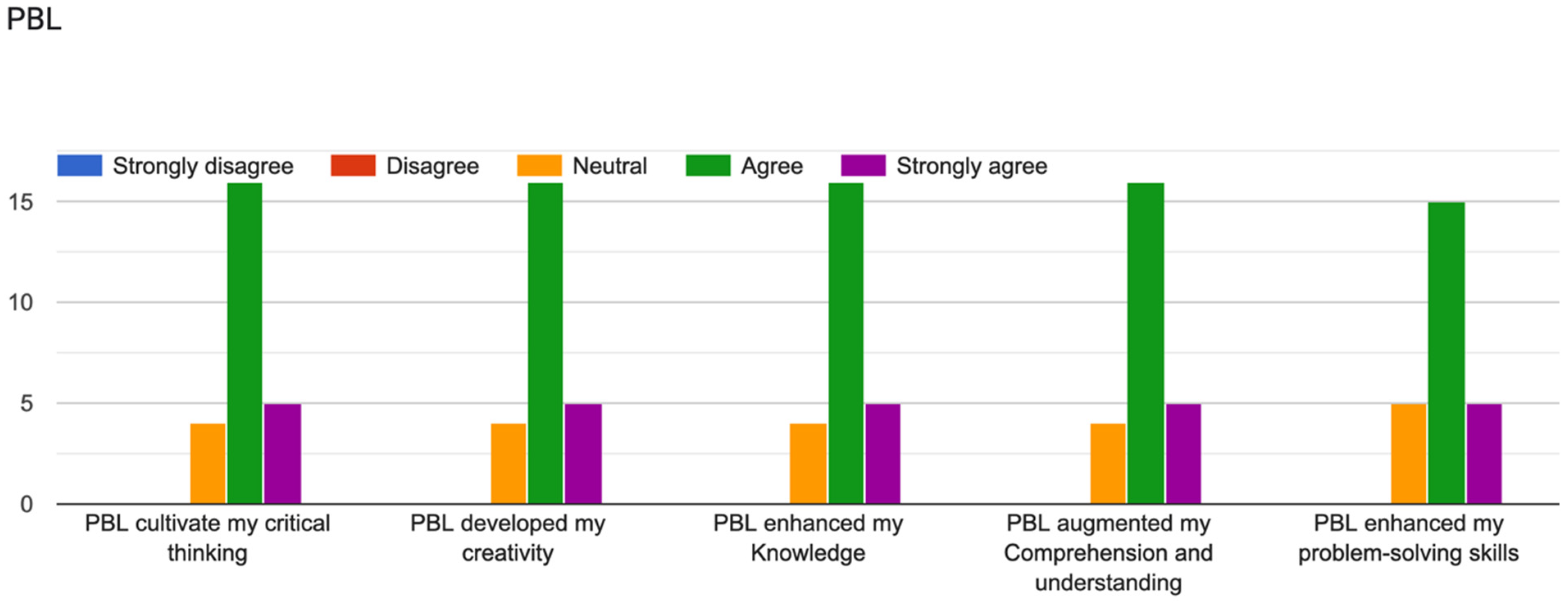
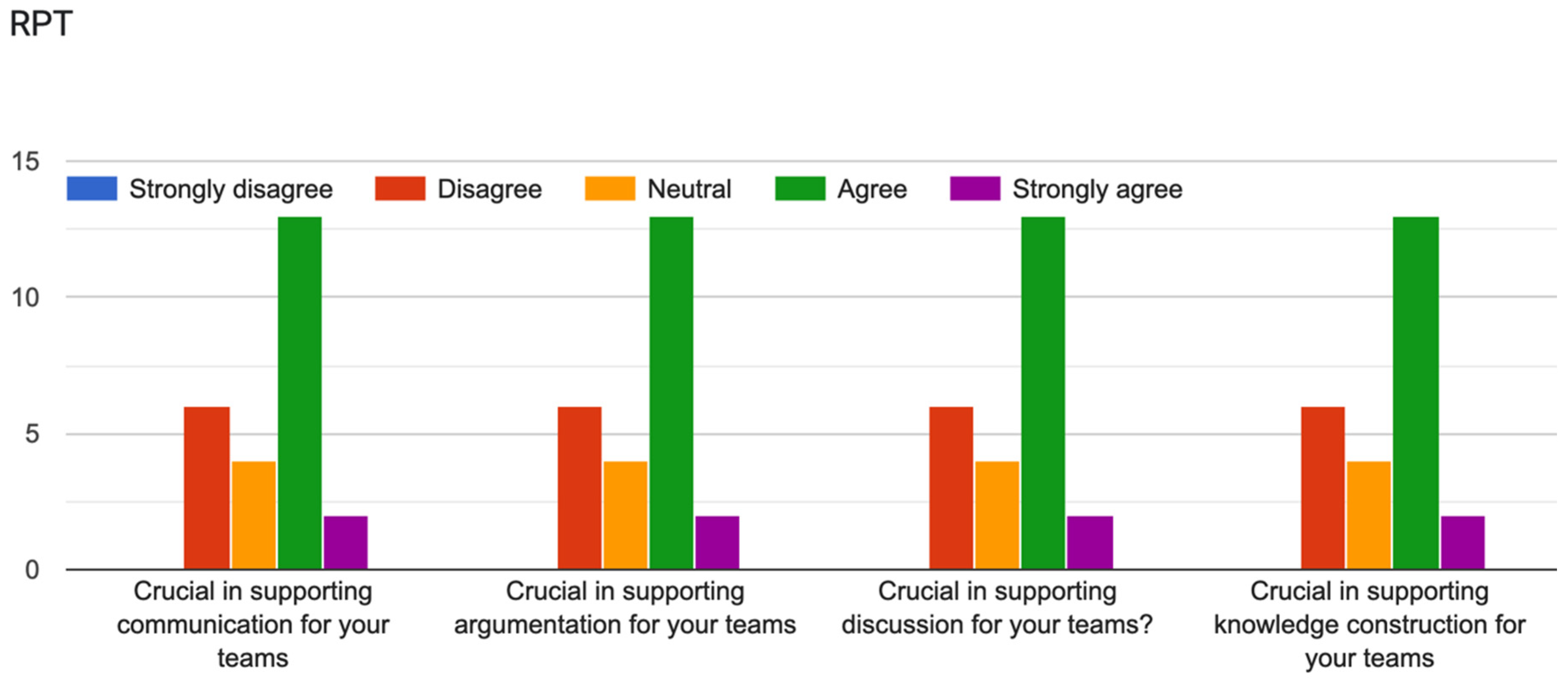
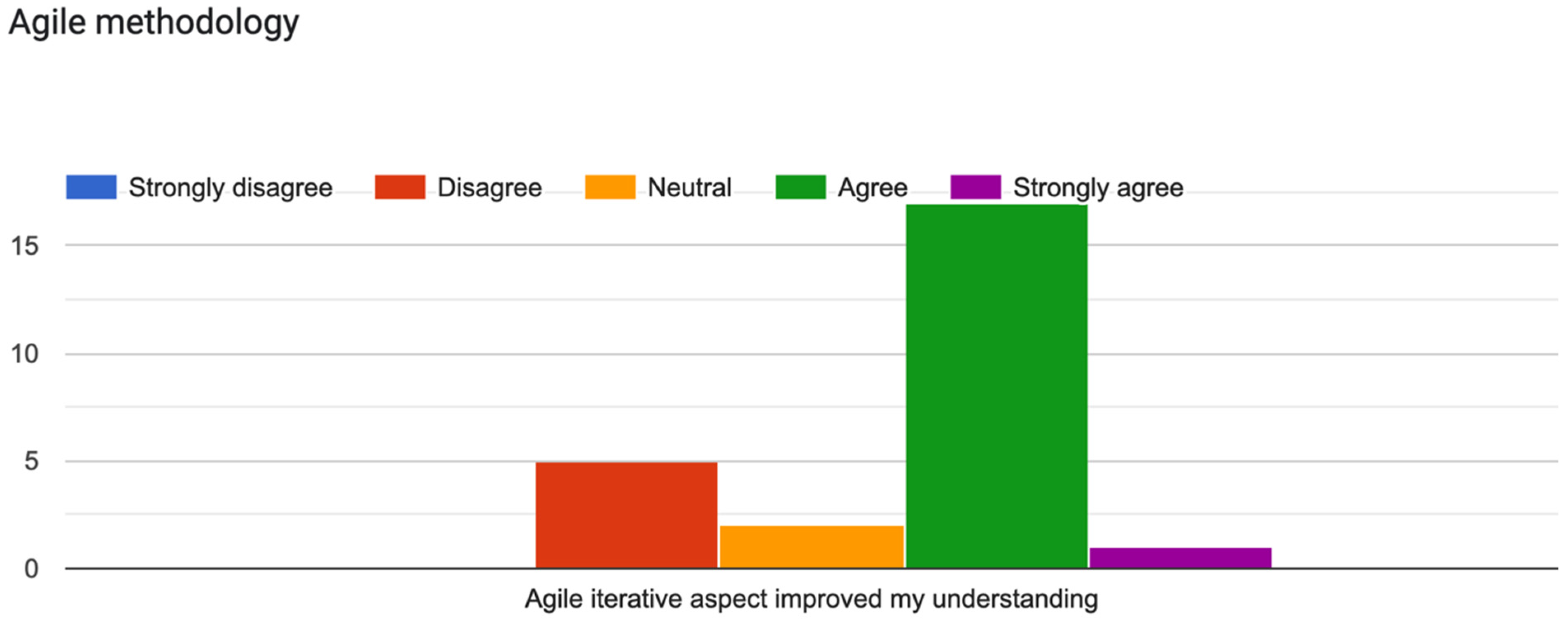
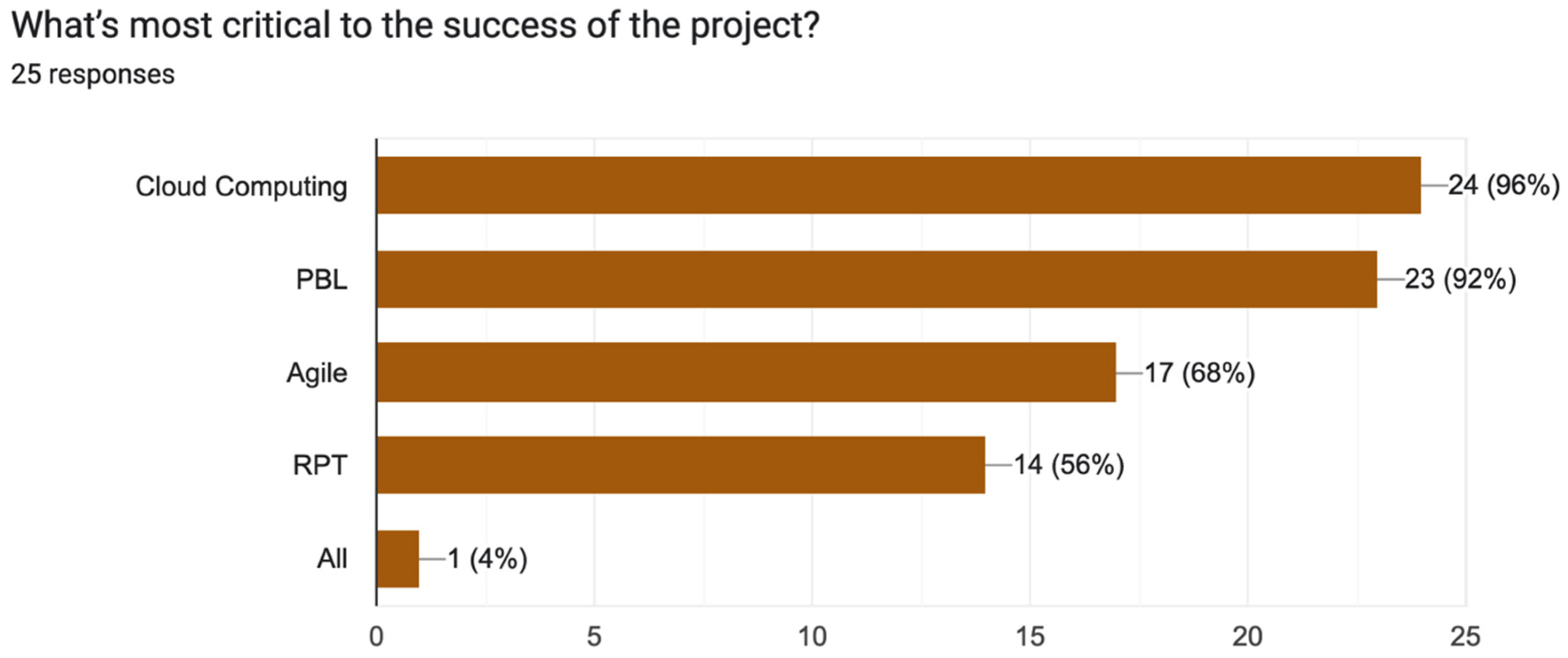
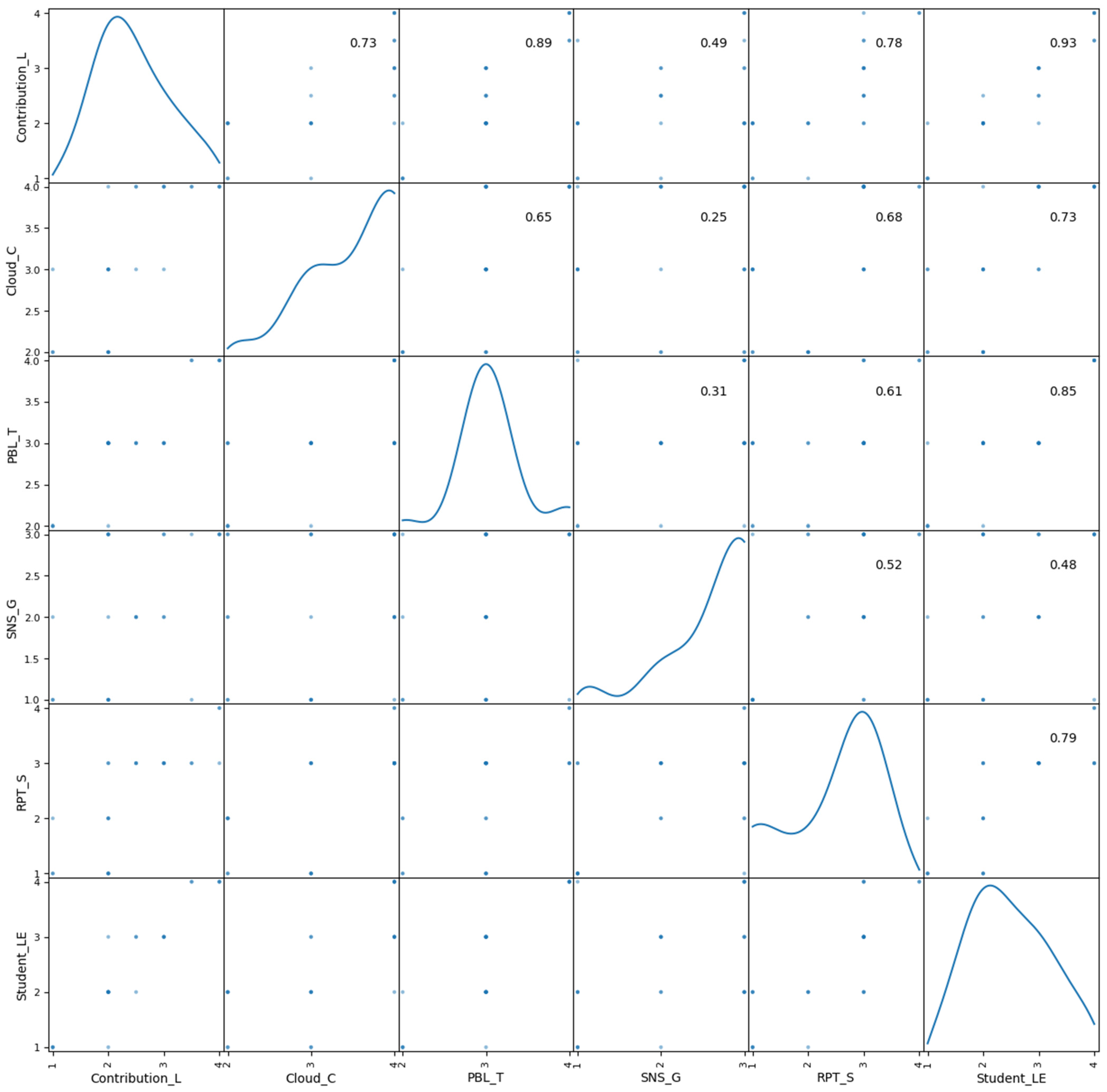

| Institution | Monitoring unit:
|
Communication unit:
| |
Technical unit:
|
| Presidency | Monitoring and communication unit:
|
Technical unit in charge of the organization of the UCA Moodle platform:
| |
Technical unit:
|
| Hardware/Software Network | Individual | Household | Rural | Urban |
|---|---|---|---|---|
| Mobile phone | - | 99.8% | - | - |
| Smartphone | A total of 75.7% of individuals are equipped with a mobile phone. The 5 to 39 age group is the most equipped with smartphones, with equipment rates ranging from 80% to 88%. | - | - | |
| Computer/Tablet/Laptop | Young people aged from 9 to 24 are the most equipped. | 60.6% | - | - |
| Laptop | - | 60.6% | - | - |
| Mobile Application | A total of 94.7% of individuals use applications on smartphones; 97% of them are young people aged from 12 to 24. Social networks, games, and access to news are the main uses. | - | - | - |
| Social Networks | Overall, 96.4% of internet users access social networks. This use is widespread, regardless of age and gender. Among them, 80% are WhatsApp users. Internet users use social networks on a daily basis. Young people between 12 and 24 years old frequently use social networks on a daily basis. | - | - | |
| Internet Access (Mobile, ADSL, Optical Fiber) | There is intensive use of the internet, especially on smartphones. | 74% overall; 40% of households say their children under the age of 15 use the internet | 60% | 80% |
| Mobile Internet | - | 70% | - | - |
| Linear Regression | Decision Tree | Random Forest | |
|---|---|---|---|
| RMSE | 0.2628184956399891 | 0.11180339887498948 | 0.17980813269519633 |
| Linear Regression | Decision Tree | Random Forest | |
|---|---|---|---|
| RMSE Mean | 0.33345375655509946 | 0.5806643756761883 | 0.4160890030464608 |
| RMSE Std | 0.20080483724190562 | 0.22434099674509428 | 0.17373659185490511 |
| Linear Regression (Ridge) | Decision Tree (DecisionTreeClassifier) | Random Forest (GradientBoostingRegressor) | |
|---|---|---|---|
| Hyperparameter grid | ‘alpha’: [0.0001, 0.001, 0.01, 0.05, 0.1, 0.2, 0.3, 0.4, 0.5, 0.6, 0.7, 0.8, 0.9, 1.0, 2.0, 3.0, 4.0, 5.0, 6.0, 7.0, 8.0, 9.0, 10.0, 20, 50, 100, 500, 1000] | ‘max_features’: [‘auto’, ‘sqrt’, ‘log2’], ‘ccp_alpha’: [0.1, 0.01, 0.001], ‘max_depth’: [5, 6, 7, 8, 9], ‘criterion’: [‘gini’, ‘entropy’] | ‘learning_rate’: [0.01, 0.02, 0.03, 0.04], ‘subsample’: [0.9, 0.5, 0.2, 0.1], ‘n_estimators’: [100, 500, 1000, 1500], ‘max_depth’: [4, 6, 8, 10] |
| Linear Regression | Decision Tree | Random Forest | |
|---|---|---|---|
| RMSE | 0.22525566673988778 | 1.1832159566199232 | 0.3613084076410328 |
Publisher’s Note: MDPI stays neutral with regard to jurisdictional claims in published maps and institutional affiliations. |
© 2022 by the author. Licensee MDPI, Basel, Switzerland. This article is an open access article distributed under the terms and conditions of the Creative Commons Attribution (CC BY) license (https://creativecommons.org/licenses/by/4.0/).
Share and Cite
Airaj, M. Cloud Computing Technology and PBL Teaching Approach for a Qualitative Education in Line with SDG4. Sustainability 2022, 14, 15766. https://doi.org/10.3390/su142315766
Airaj M. Cloud Computing Technology and PBL Teaching Approach for a Qualitative Education in Line with SDG4. Sustainability. 2022; 14(23):15766. https://doi.org/10.3390/su142315766
Chicago/Turabian StyleAiraj, Mohammed. 2022. "Cloud Computing Technology and PBL Teaching Approach for a Qualitative Education in Line with SDG4" Sustainability 14, no. 23: 15766. https://doi.org/10.3390/su142315766
APA StyleAiraj, M. (2022). Cloud Computing Technology and PBL Teaching Approach for a Qualitative Education in Line with SDG4. Sustainability, 14(23), 15766. https://doi.org/10.3390/su142315766








